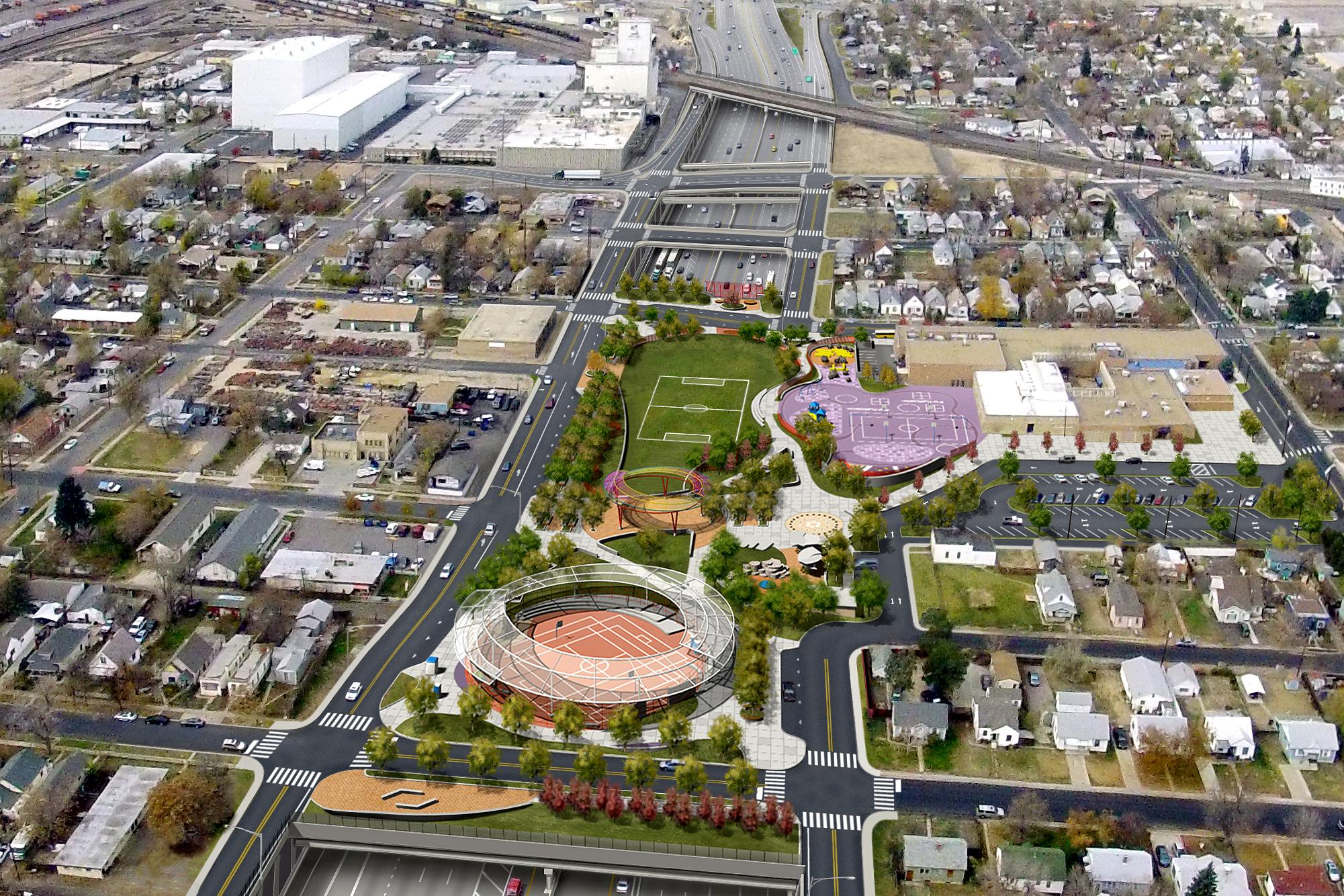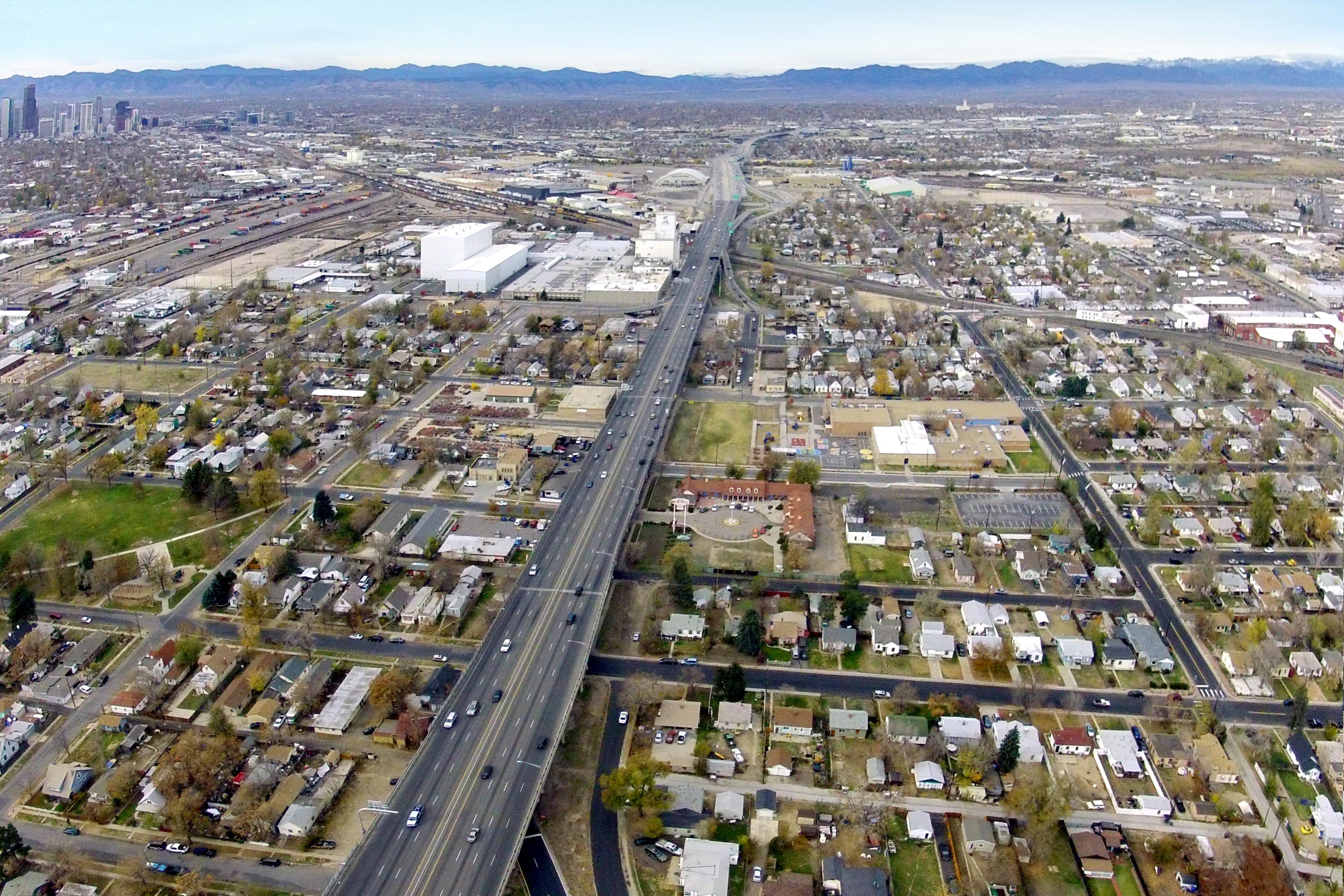

Lilian Marsh won’t miss her view of the Interstate 70 viaduct, an aging elevated section of the freeway that has split her north Denver neighborhood for a half century.
“It could be gone,” Marsh said. “I’m excited for the transformation of the aesthetic of the neighborhood, with the viaduct right there, it’s not very appealing.”
She’s referring to one of the biggest transportation projects in state history, which could begin next year. I-70 will be overhauled through north Denver: Its viaduct will be torn down, lowered below street level, and partially covered. At the same time, the busy freeway will be widened from three lanes to four in both directions, from I-25 east to Chambers Road.
After 13 years of study and debate, the Colorado Department of Transportation is poised to get the green light from the federal government for the $1.2 billion project. A series of public meetings on the Final Environmental Impact Statement start Monday night.

The project will disrupt the impoverished and largely Hispanic Elyria-Swansea neighborhood in Denver. Bruce Medina has lived there for more than a decade, and he’s intrigued by the idea of a 4-acre landscaped cap that will cover a portion of the below grade freeway.
“I’m kind of looking forward to seeing it, because it can’t hurt what we see now. Everything’s tagged, everything’s crumbling,” he said.
After years of deadlock on how best to deal with the viaduct, the proposal for a below grade freeway with a small cap finally won people over.
“What we’re really doing is reconnecting communities who were divided in the 1960’s by, frankly, a dark and imposing viaduct,” said Rebecca White, a spokeswoman for transportation department.
“We’ve poured millions of dollars to keep the structure safe and functioning about 20 years it’s expected life,” White said. “But it’s really reached the end, and needs to be addressed.”
Currently, the viaduct carries 145,000 cars a day, and CDOT says it’s vulnerable to failure within 10 to 15 years.
Traffic growth also needs to be addressed. In 20 years, CDOT estimates traffic will double along this section of I-70, which is a critical transportation artery for the metro area.
There’s currently about 10 hours a day of gridlock, "particularly for I-70 where you’ve got this connector to DIA, you’ve got the Aerotropolis, you’ve got the National Western Stock Show, all the development that is coming down the line," White said. “We’ve have to get out there and do something or the congestion will grow to 12 plus hours a day," she added.
But not everyone is convinced more lanes will equal less traffic, including Danny Katz, who heads CoPIRG, an advocacy group, because "long-standing research shows that when you widen highways, it doesn’t necessarily solve congestion."
CoPIRG released a report calling the widening of I-70 a waste of money that would be better spent on improving roads or developing alternative modes of transportation.
While the City of Denver has voted in favor of the current project design, and kicked in $37 million to support it, City Councilwoman Deborah Ortega isn’t sold yet. She’s primarily concerned about how five years of intense construction will impact the impoverished and largely Hispanic neighborhood.
“How do we ensure that those neighborhoods that have borne the brunt of that project since it’s existence will not be further denigrated then what they’ve already been?” she said. For instance, she wants to see air quality monitoring before, during and after construction.
North Denver resident Lillian Marsh, standing in her doorway, the roar of I-70 in the background, admits she’s also concerned about a half-decade of construction.
“Once it starts happening it will be two doors down from me," she said.
The project still needs federal approval. If everything goes as planned, construction could begin next year.








